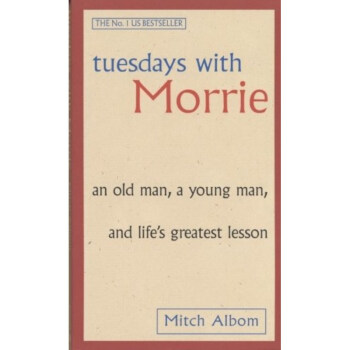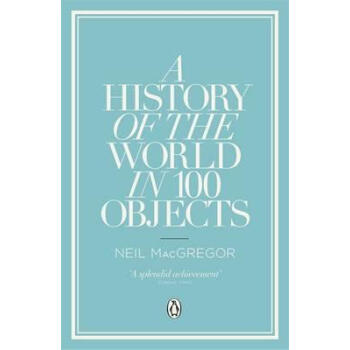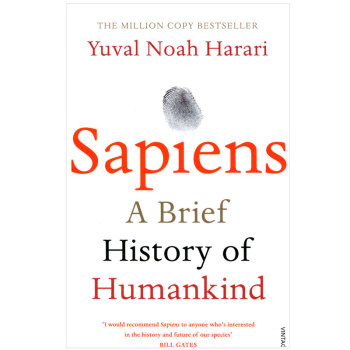![How Not to Be Wrong The Power of Mathematical T [平装]](https://pic.tinynews.org/19551563/56a191dbN9b398e0c.jpg)

具体描述
内容简介
The Freakonomics of math—a math-world superstar unveils the hidden beauty and logic of the world and puts its power in our handsThe math we learn in school can seem like a dull set of rules, laid down by the ancients and not to be questioned. In How Not to Be Wrong, Jordan Ellenberg shows us how terribly limiting this view is: Math isn’t confined to abstract incidents that never occur in real life, but rather touches everything we do—the whole world is shot through with it.
Math allows us to see the hidden structures underneath the messy and chaotic surface of our world. It’s a science of not being wrong, hammered out by centuries of hard work and argument. Armed with the tools of mathematics, we can see through to the true meaning of information we take for granted: How early should you get to the airport? What does “public opinion” really represent? Why do tall parents have shorter children? Who really won Florida in 2000? And how likely are you, really, to develop cancer?
How Not to Be Wrong presents the surprising revelations behind all of these questions and many more, using the mathematician’s method of analyzing life and exposing the hard-won insights of the academic community to the layman—minus the jargon. Ellenberg chases mathematical threads through a vast range of time and space, from the everyday to the cosmic, encountering, among other things, baseball, Reaganomics, daring lottery schemes, Voltaire, the replicability crisis in psychology, Italian Renaissance painting, artificial languages, the development of non-Euclidean geometry, the coming obesity apocalypse, Antonin Scalia’s views on crime and punishment, the psychology of slime molds, what Facebook can and can’t figure out about you, and the existence of God.
Ellenberg pulls from history as well as from the latest theoretical developments to provide those not trained in math with the knowledge they need. Math, as Ellenberg says, is “an atomic-powered prosthesis that you attach to your common sense, vastly multiplying its reach and strength.” With the tools of mathematics in hand, you can understand the world in a deeper, more meaningful way. How Not to Be Wrong will show you how.
作者简介
Jordan Ellenberg is the John D. MacArthur Professor of Mathematics at the University of Wisconsin-Madison and a 2015 Guggenheim fellow. He has lectured around the world on his research in number theory and delivered one of the invited addresses at the 2015 Joint Mathematics Meetings, the largest math conference in the world. His writing has appeared in?The New York Times,?The Washington Post,?The Wall Street Journal,?The Boston Globe,?Wired,?and?The Believer, and he has been featured on the Today show and NPR’s?All Things Considered. He writes a popular column called “Do the Math” for?Slate.,,精彩书评
Manil Suri,?The Washington Post:“Brilliantly engaging.... Ellenberg’s talent for finding real-life situations that enshrine mathematical principles would be the envy of any math teacher. He presents these in fluid succession, like courses in a fine restaurant, taking care to make each insight shine through, unencumbered by jargon or notation. Part of the sheer intellectual joy of the book is watching the author leap nimbly from topic to topic, comparing slime molds to the Bush-Gore Florida vote, criminology to Beethoven’s Ninth Symphony. The final effect is of one enormous mosaic unified by mathematics.”
Mario Livio, The Wall Street Journal:
“Easy-to-follow, humorously presented.... This book will help you to avoid the pitfalls that result from not having the right tools. It will help you realize that mathematical reasoning permeates our lives—that it can be, as Mr. Ellenberg writes, a kind of 'X-ray specs that reveal hidden structures underneath the messy and chaotic surface of the world.'”
Evelyn Lamb, Scientific American:
“Witty, compelling, and just plain fun to read.... How Not to Be Wrong can help you explore your mathematical superpowers.”
Laura Miller, Salon:
“A poet-mathematician offers an empowering and entertaining primer for the age of Big Data.... A rewarding popular math book for just about anyone.”
Nature:
“Mathematicians from Charles Lutwidge Dodgson to Steven Strogatz have celebrated the power of mathematics in life and the imagination. In this hugely enjoyable exploration of everyday maths as 'an atomic-powered prosthesis that you attach to your common sense', Jordan Ellenberg joins their ranks. Ellenberg, an academic and Slate’s ‘Do the Math’ columnist, explains key principles with erudite gusto—whether poking holes in predictions of a US 'obesity apocalypse', or unpicking an attempt by psychologist B. F. Skinner to prove statistically that Shakespeare was a dud at alliteration.”
Times Higher Education:
“A fresh application of complex mathematical thinking to commonplace events.... How Not to Be Wrong is beautifully written, holding the reader’s attention throughout with well-chosen material, illuminating exposition, wit and helpful examples. I am reminded of the great writer of recreational mathematics, Martin Gardner: Ellenberg shares Gardner’s remarkable ability to write clearly and entertainingly, bringing in deep mathematical ideas without the reader registering their difficulty.”
Kirkus Reviews:
“The author avoids heavy jargon and relies on real-world anecdotes and basic equations and illustrations to communicate how even simple math is a powerful tool….[Ellenberg]writes that, at its core, math is a special thing and produces a feeling of understanding unattainable elsewhere: ‘You feel you’ve reached into the universe’s guts and put your hand on the wire.’ Math is profound, and profoundly awesome, so we should use it well—or risk being wrong….Witty and expansive, Ellenberg’s math will leave readers informed, intrigued and armed with plenty of impressive conversation starters.”
Booklist:
“Readers will indeed marvel at how often mathematics sheds unexpected light on economics (assessing the performance of investment advisors), public health (predicting the likely prevalence of obesity in 30 years), and politics (explaining why wealthy individuals vote Republican but affluent states go for Democrats). Relying on remarkably few technical formulas, Ellenberg writes with humor and verve as he repeatedly demonstrates that mathematics simply extends common sense. He manages to translate even the work of theoretical pioneers such as Cantor and G?del into the language of intelligent amateurs. The surprises that await readers include not only a discovery of the astonishing versatility of mathematical thinking but also a realization of its very real limits. Mathematics, as it turns out, simply cannot resolve the real-world ambiguities surrounding the Bush-Gore cliff-hanger of 2000, nor can it resolve the much larger question of God’s existence. A bracing encounter with mathematics that matters.”
Steven Pinker, Johnstone Family Professor of Psychology, Harvard University; author of How the Mind Works:
“The title of this wonderful book explains what it adds to the honorable genre of popular writing on mathematics. Like Lewis Carroll, George Gamow, and Martin Gardner before him, Jordan Ellenberg shows how mathematics can delight and stimulate the mind. But he also shows that mathematical thinking should be in the toolkit of every thoughtful person—of everyone who wants to avoid fallacies, superstitions, and other ways of being wrong.”
Steven Strogatz, Schurman Professor of Applied Mathematics, Cornell University, and author, The Joy of x:
“With math as with anything else, there’s smart, and then there’s street smart. This book will help you be both. Fans of Freakonomics and The Signal and the Noise will love Ellenberg’s surprising stories, snappy writing, and brilliant lessons in numerical savvy. How Not to Be Wrong is sharp, funny, and right.”
John Allen Paulos, author of Innumeracy and A Mathematician Reads the Newspaper:
“Through a powerful mathematical lens Jordan Ellenberg engagingly examines real-world issues ranging from the fetishizing of straight lines in the reporting of obesity to the game theory of missing flights, from the relevance to digestion of regression to the mean to the counter-intuitive Berkson’s paradox, which may explain why handsome men don’t seem to be as nice as not so handsome ones. The coverage is broad, but not shallow and the exposition is non-technical and sprightly.”
Timothy Gowers:
“Jordan Ellenberg is a top mathematician and a wonderful expositor, and the theme of his book is important and timely. How Not to Be Wrong is destined to be a classic.”
Rebecca Newberger Goldstein, author of Plato at the Googleplex:
“Jordan Ellenberg promises to share ways of thinking that are both simple to grasp and profound in their implications, and he delivers in spades. These beautifully readable pages delight and enlighten in equal parts. Those who already love math will eat it up, and those who don’t yet know how lovable math is are in for a most pleasurable surprise."
Danica McKellar, actress and bestselling author of Math Doesn’t Suck and Kiss My Math:
"Brilliant and fascinating! Ellenberg shows his readers how to magnify common sense using the tools usually only accessible to those who have studied higher mathematics. I highly recommend it to anyone interested in expanding their worldly savviness—and math IQ!"
The Guardian
“How Not to Be Wrong is a cheery?manifesto for the utility of mathematical thinking. Ellenberg's prose is a delight – informal and robust, irreverent yet serious. Maths is "an atomic-powered prosthesis that you attach to your common sense, vastly multiplying its reach and strength," he writes. Doing maths "is to be, at once, touched by fire and bound by reason. Logic forms a narrow channel through which intuition flows with vastly augmented force.”
前言/序言
用户评价
天呐,我真是太激动了!最近刚收到我心心念念的那本《How Not to Be Wrong: The Power of Mathematical Thinking》的平装版,光是拿到手就感觉沉甸甸的,里面肯定藏着无数闪光的思想。我一直都对数学有一种莫名的向往,但又常常因为那些复杂的公式和抽象的概念望而却步,感觉自己是个“数学小白”。然而,这本书的名字就直击我的痛点——“如何避免犯错”,这不正是我一直以来在生活中,尤其是在做一些重要决策时常常感到困惑的地方吗?我总觉得,如果我能像数学家那样,以一种更严谨、更逻辑的方式去思考,是不是就能少走很多弯路,做出更明智的选择?这本书的封面设计也很有意思,简洁但又不失力量感,让我对里面的内容充满了好奇。我迫不及待地想翻开它,看看作者是如何将“数学思维”的力量运用到日常生活的方方面面,又是如何教会我们像数学家一样去看待问题,去分析,去推导,去得出更接近真相的结论。我特别期待书中能有一些具体的例子,能够让我这个“小白”也能理解,并且能够实际运用到我的学习、工作甚至人际交往中。这本书就像一个宝藏,我相信它能为我的思维方式带来一场革命。
评分我一直相信,真正的智慧在于能够用最简单的方式理解最复杂的问题,而《How Not to Be Wrong: The Power of Mathematical Thinking》这本书,似乎正是我一直在寻找的。平装版的到手,更是增添了我对这本书的喜爱。我常常在思考,为什么有些人能够如此清晰地分析问题,做出准确的预测,而我却常常在原地打转,甚至做出一些显而易见的错误?我一直在寻找原因,而“数学思维”这个词,让我看到了希望。我希望这本书能够揭示数学思维的本质,它并非高不可攀,而是存在于我们生活的方方面面,能够帮助我们洞察事物的本质,摆脱主观臆断和情绪的干扰。我特别期待书中能够提供一些方法和工具,让我在日常生活中能够像一个数学家一样去思考,去质疑,去验证,去得出更接近真相的结论。这本书对我来说,不仅仅是一本书,更像是一位智慧的导师,它将引导我走向一个更理性、更清晰、更少犯错的思维世界。
评分我一直以来都对那些能够把复杂事物解释得清晰易懂的书籍情有独钟,而《How Not to Be Wrong: The Power of Mathematical Thinking》正是这样一本让我充满期待的作品。拿到这本书的平装版,第一感觉就是它充满了“干货”的气息。我总觉得,生活中的很多困境,其实都可以用更理性的方式去解决,而数学,这个被很多人视为高冷学科的存在,或许正是破解这些困境的金钥匙。我希望这本书能够带我走进一个全新的思维领域,让我明白,原来数学不仅仅是冰冷的数字和公式,它更是一种观察世界、理解世界、解决问题的方法论。我特别想知道,作者是如何将数学的严谨性、逻辑性和普适性融入到我们日常生活的各种场景中,比如我们如何理解概率,如何避免认知偏差,如何做出更优的决策。我相信,通过这本书的学习,我能够培养出一种更强大的“纠错能力”,不至于在信息爆炸的时代迷失方向,能够更清晰地辨别真伪,做出更符合事实的判断。
评分作为一名一直以来对数字和逻辑有点“距离感”的读者,我这次真是抱着一种“试试看”的心态入手了这本《How Not to Be Wrong》。平装版的质感比我想象中要好很多,纸张厚实,印刷清晰,拿在手里非常舒服。我之所以会被这本书吸引,很大程度上是因为“数学思维”这个概念。我一直以为数学就是考试、解题,但这本书似乎在挑战我的认知,它把数学提升到了一种“思维方式”的高度,这让我眼前一亮。我很好奇,数学思维究竟是一种什么样的能力?它和我们常说的逻辑思维有什么区别,又有什么联系?更重要的是,它能如何帮助我们在日常生活中做出更“正确”的判断,避免那些我们常常后知后觉的错误?我特别期待书中能够提供一些颠覆性的视角,让我能够重新认识那些习以为常的现象,用一种全新的、更理性、更客观的角度去审视它们。我希望这本书不仅仅是教我一些技巧,而是能真正培养我的一种思维习惯,让我变得更敏锐,更能透过表象看到本质,减少被误导或做出草率决定的可能。
评分这本书的出现,简直就是给我这样“数学恐惧症”患者的一剂良药!《How Not to Be Wrong: The Power of Mathematical Thinking》这本书的平装版,在我看来,就像是一扇通往新世界的大门。我一直以来都觉得自己是个容易冲动、容易被情绪左右的人,做决定的时候也常常模棱两可,事后才后悔不已。我总觉得,如果我能拥有一种更强大的思维工具,能让我站得更高,看得更远,那就太好了。而“数学思维”这个概念,恰恰给了我这样的希望。我迫不及待地想知道,它究竟是如何帮助我们“避免犯错”的?是教会我们识别逻辑谬误,还是提供一套科学的决策框架?我尤其期待书中能够通过一些生动有趣的案例,来讲解那些看似高深的数学原理,让我这个“门外汉”也能轻松理解,并且能够学以致用。我希望这本书能让我变得更理性,更冷静,在面对纷繁复杂的世界时,能够拥有一种“稳如泰山”的思维定力,做出更明智、更少遗憾的选择。
评分还没看
评分Using statistical analysis for decision making... But this book explained all in a way that is easily understood by most none mathematician.
评分Goooooooooooooooooooooooooooood
评分不错的物品
评分书很不错,慢慢看吧,包装很一般
评分挺好,喜欢
评分正品
评分不错的物品
评分正品
相关图书
本站所有内容均为互联网搜索引擎提供的公开搜索信息,本站不存储任何数据与内容,任何内容与数据均与本站无关,如有需要请联系相关搜索引擎包括但不限于百度,google,bing,sogou 等
© 2025 book.idnshop.cc All Rights Reserved. 静思书屋 版权所有

![The Princess in Black and the Perfect Princess P [平装] [06--08] pdf epub mobi 电子书 下载](https://pic.tinynews.org/19609990/578c73b4N4ad4e517.jpg)
![Amulet #1-7 Box Set 护身符套装1-7册 英文原版 [平装] [8-12岁] pdf epub mobi 电子书 下载](https://pic.tinynews.org/19727281/587c7c24N95020a50.jpg)
![The Bug Book [平装] [08--12] pdf epub mobi 电子书 下载](https://pic.tinynews.org/19739638/57844d08Nf375deae.jpg)











![Frog and Toad All Year (Book + CD) (I Can Read, Level 2)青蛙和蟾蜍的一整年,书附CD版 [平装] [4-8岁] pdf epub mobi 电子书 下载](https://pic.tinynews.org/19004062/bb258c9e-a468-4068-bf73-6b4ad35cfc86.jpg)
![Scat, Cat! (My First I Can Read) 猫咪,走开 [平装] [3-5岁] pdf epub mobi 电子书 下载](https://pic.tinynews.org/19004260/550bf1f0N8c430024.jpg)
![Tom Clancy's Ghost Recon 英文原版 [平装] pdf epub mobi 电子书 下载](https://pic.tinynews.org/19008461/d8a7cf3d-352a-4547-9315-4958ed77e0d2.jpg)
![The Richest Man in Babylon巴比伦富翁的理财圣经 英文原版 [平装] pdf epub mobi 电子书 下载](https://pic.tinynews.org/19008556/5acc1d90Ncd51810d.jpg)
![Drive: The Surprising Truth about What Motivates Us 英文原版 [平装] pdf epub mobi 电子书 下载](https://pic.tinynews.org/19008710/4c549487-6546-4113-bd69-33896d9c67b9.jpg)
![Arthur and the Poetry Contest 亚瑟与诗歌比赛 [平装] pdf epub mobi 电子书 下载](https://pic.tinynews.org/19008869/fdf648cc-f23e-42f7-aaac-62236f7a9d1e.jpg)